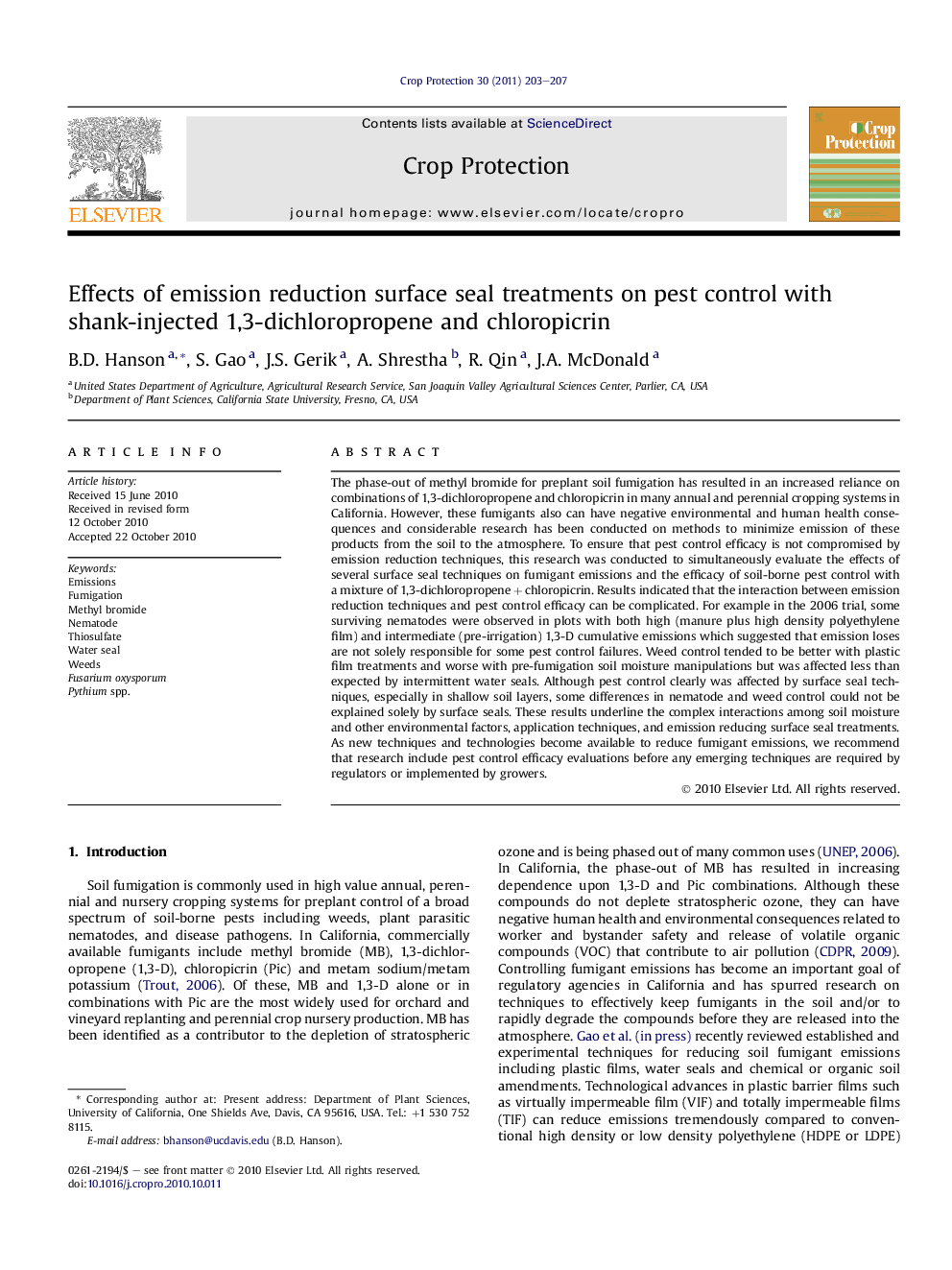| کد مقاله | کد نشریه | سال انتشار | مقاله انگلیسی | نسخه تمام متن |
|---|---|---|---|---|
| 4506657 | 1321323 | 2011 | 5 صفحه PDF | دانلود رایگان |

The phase-out of methyl bromide for preplant soil fumigation has resulted in an increased reliance on combinations of 1,3-dichloropropene and chloropicrin in many annual and perennial cropping systems in California. However, these fumigants also can have negative environmental and human health consequences and considerable research has been conducted on methods to minimize emission of these products from the soil to the atmosphere. To ensure that pest control efficacy is not compromised by emission reduction techniques, this research was conducted to simultaneously evaluate the effects of several surface seal techniques on fumigant emissions and the efficacy of soil-borne pest control with a mixture of 1,3-dichloropropene + chloropicrin. Results indicated that the interaction between emission reduction techniques and pest control efficacy can be complicated. For example in the 2006 trial, some surviving nematodes were observed in plots with both high (manure plus high density polyethylene film) and intermediate (pre-irrigation) 1,3-D cumulative emissions which suggested that emission loses are not solely responsible for some pest control failures. Weed control tended to be better with plastic film treatments and worse with pre-fumigation soil moisture manipulations but was affected less than expected by intermittent water seals. Although pest control clearly was affected by surface seal techniques, especially in shallow soil layers, some differences in nematode and weed control could not be explained solely by surface seals. These results underline the complex interactions among soil moisture and other environmental factors, application techniques, and emission reducing surface seal treatments. As new techniques and technologies become available to reduce fumigant emissions, we recommend that research include pest control efficacy evaluations before any emerging techniques are required by regulators or implemented by growers.
Research highlights
► Emission reduction techniques impact soil fumigation efficacy.
► Weed control was reduced in surface soils with high moisture content.
► Nematode control reduced in treatments with high emission or excess soil moisture.
► Emission reduction research efforts must also consider impacts on pest control.
Journal: Crop Protection - Volume 30, Issue 2, February 2011, Pages 203–207